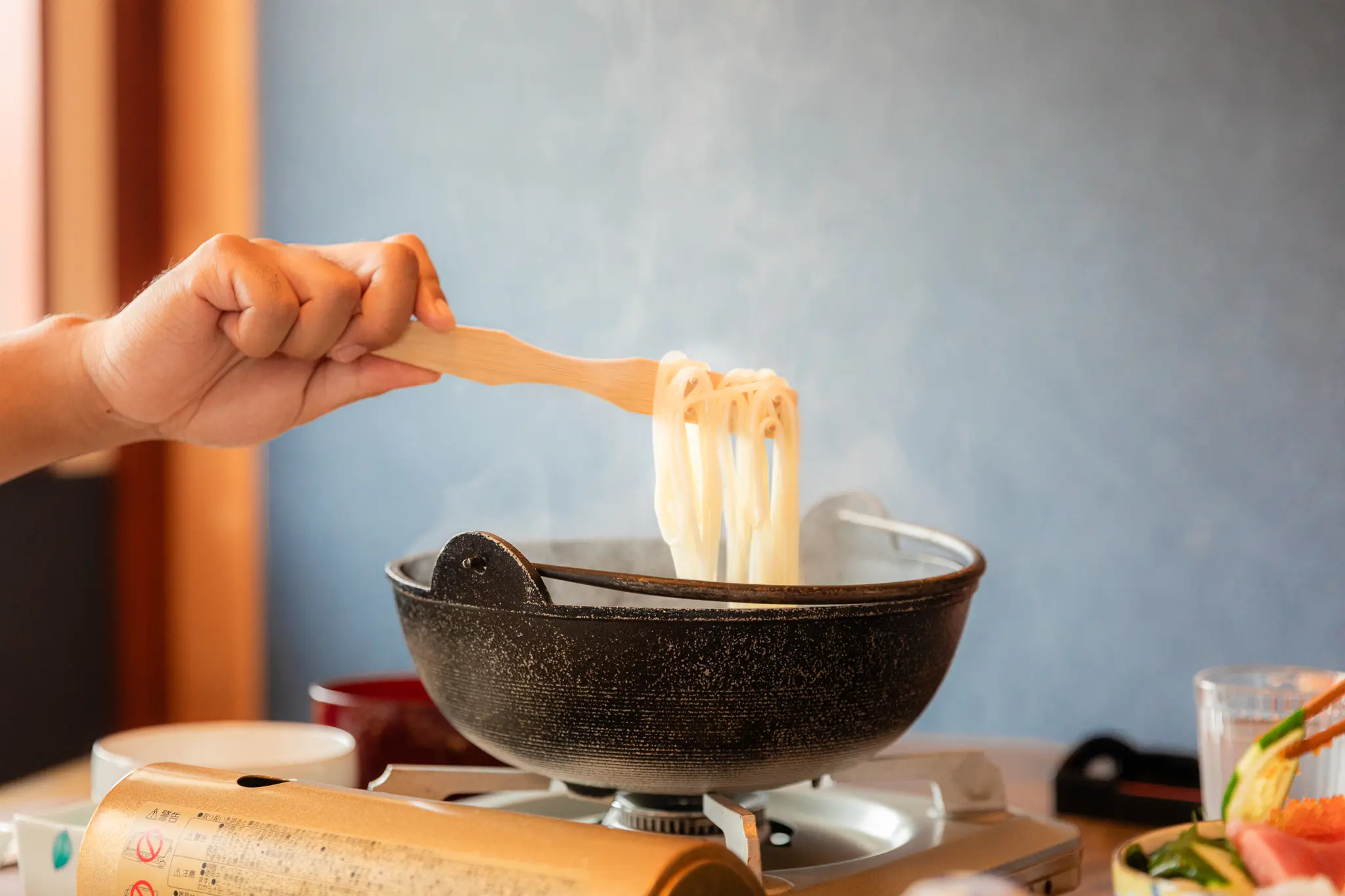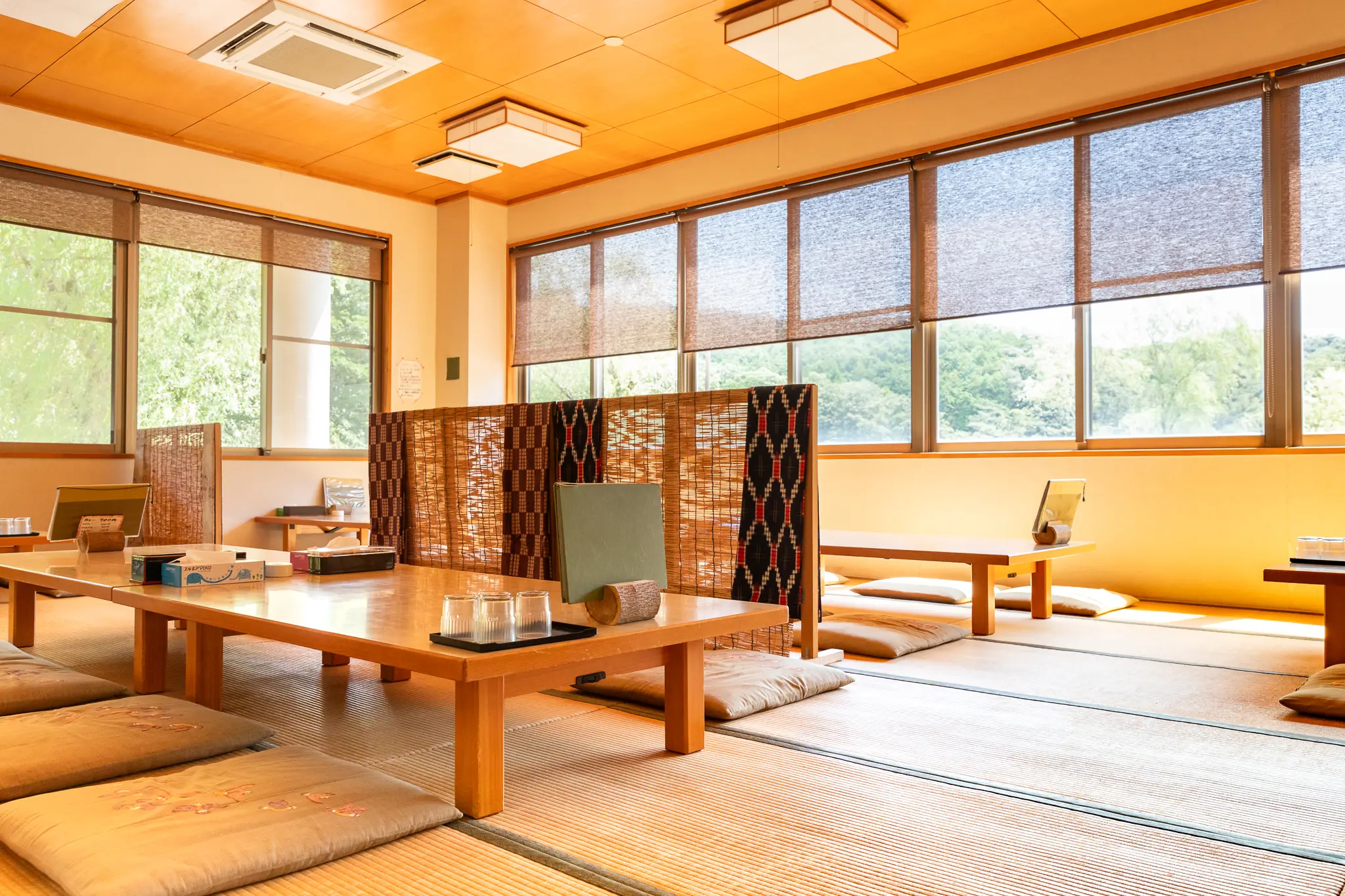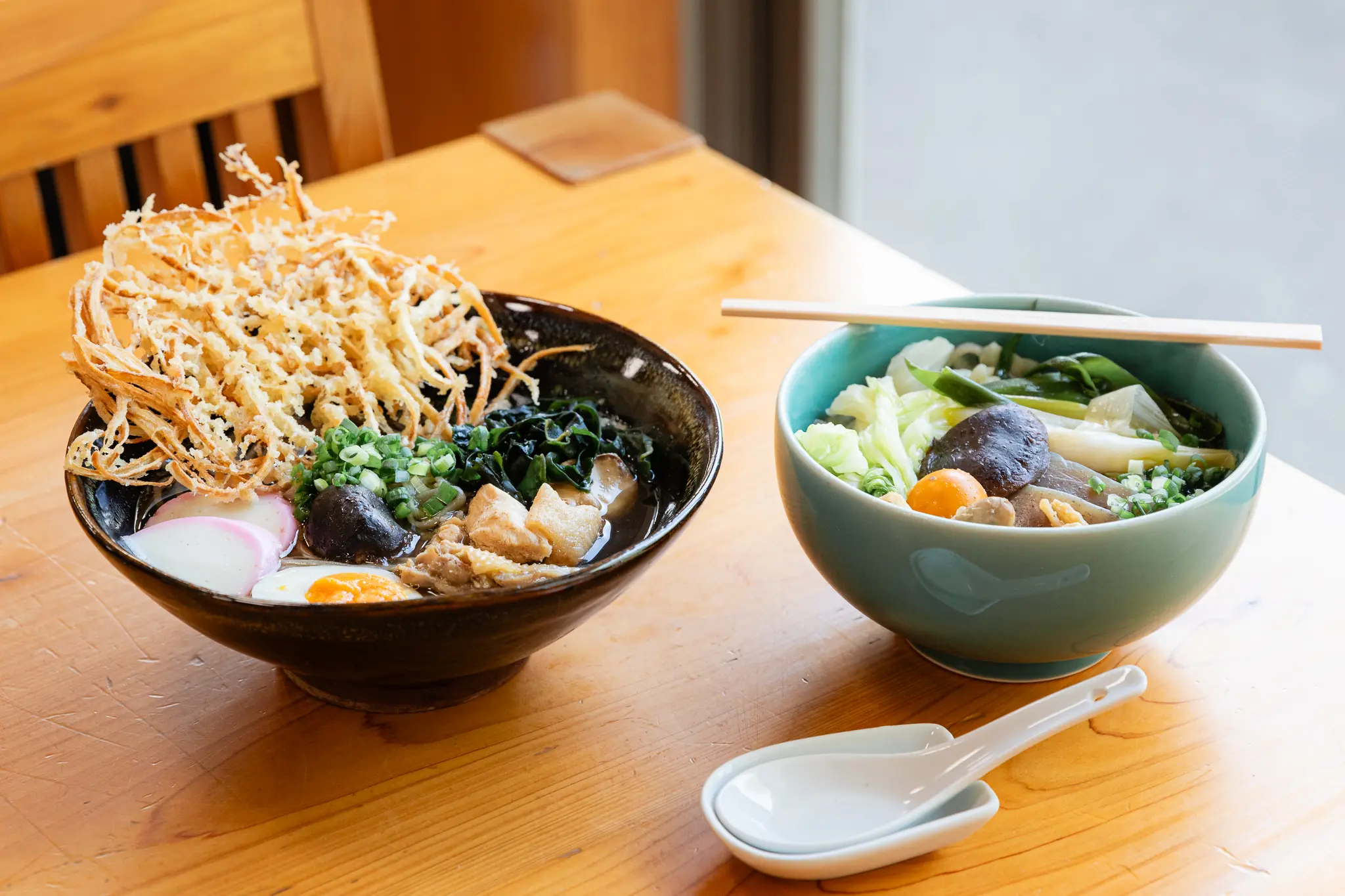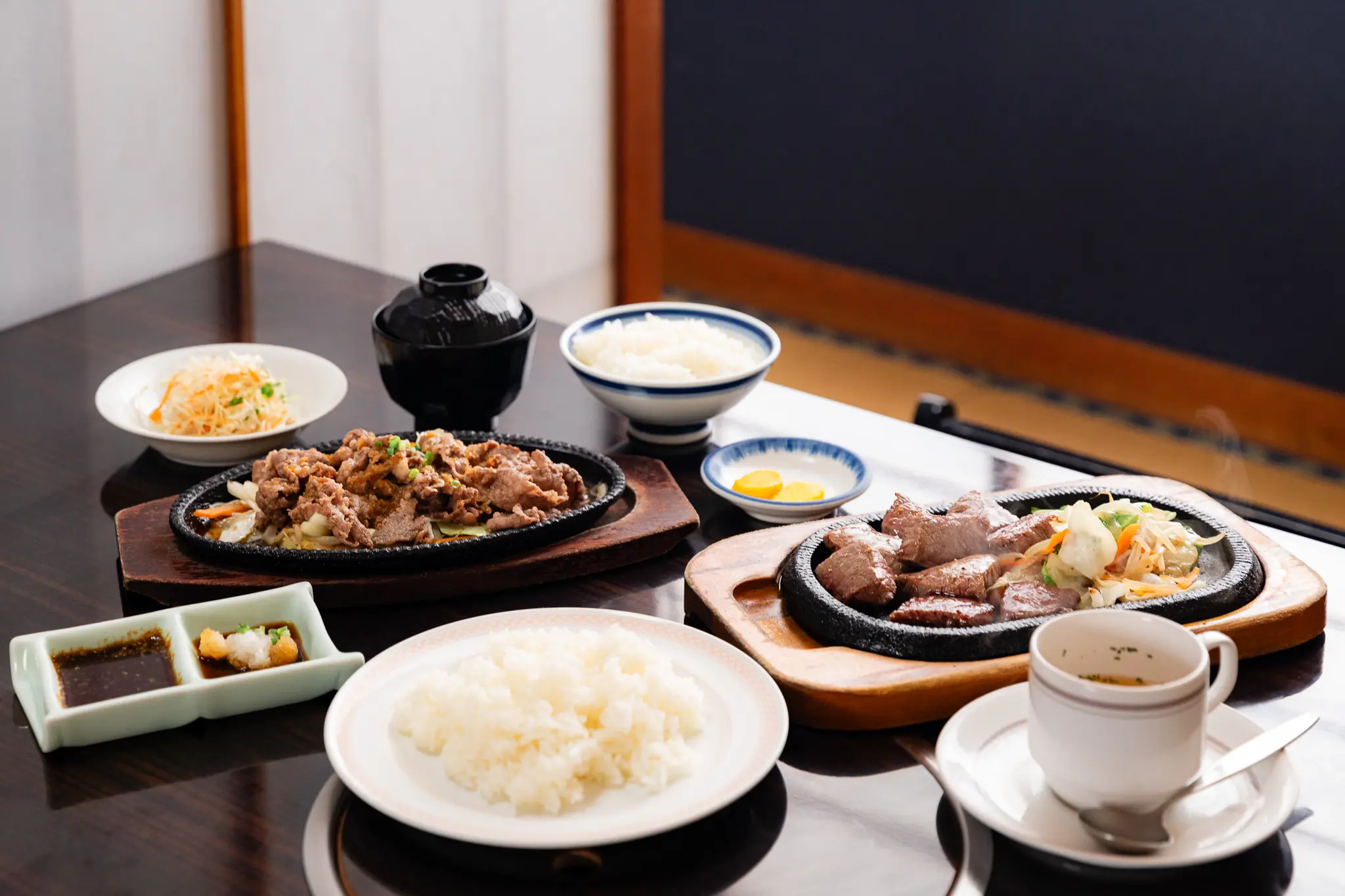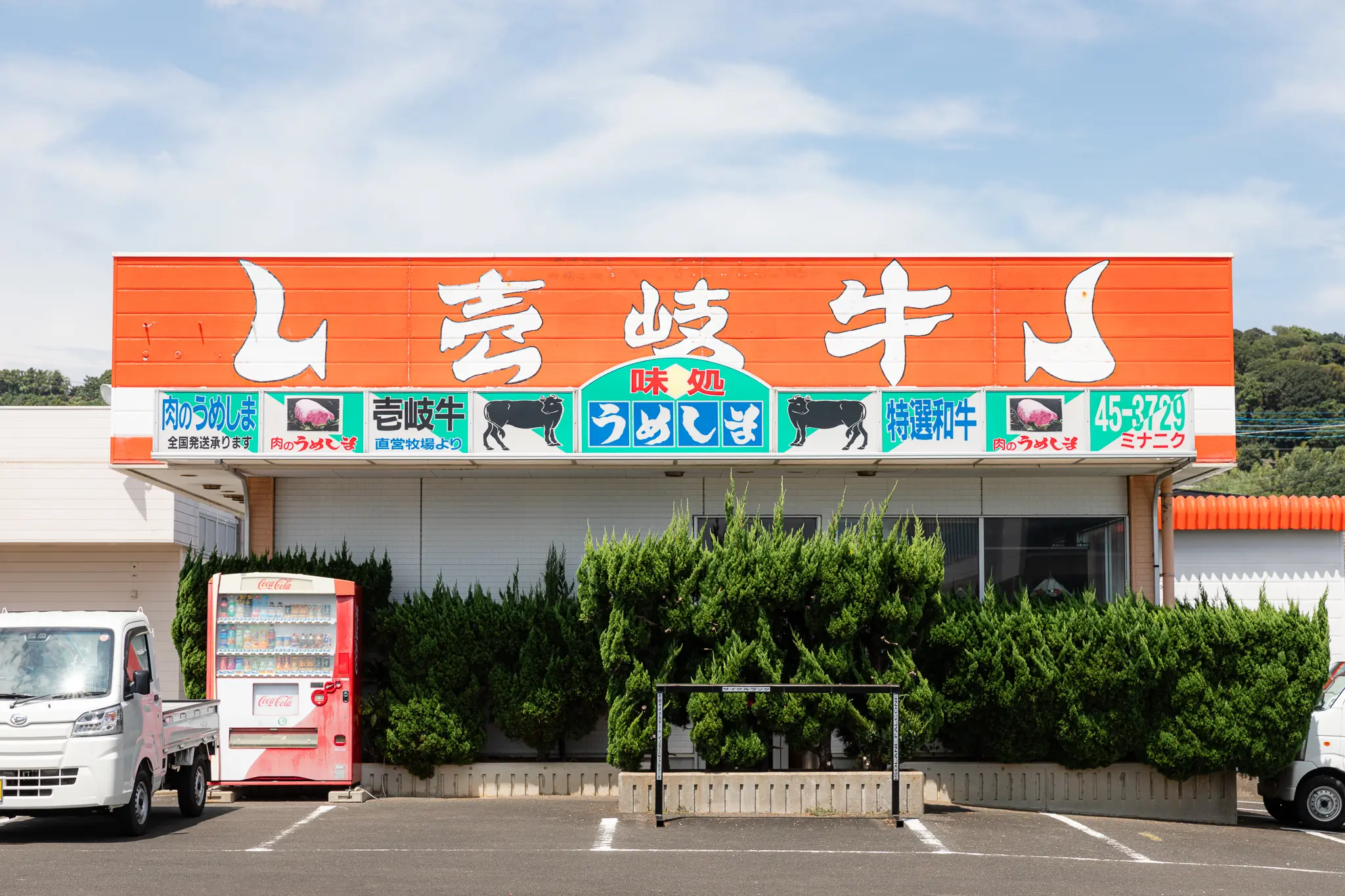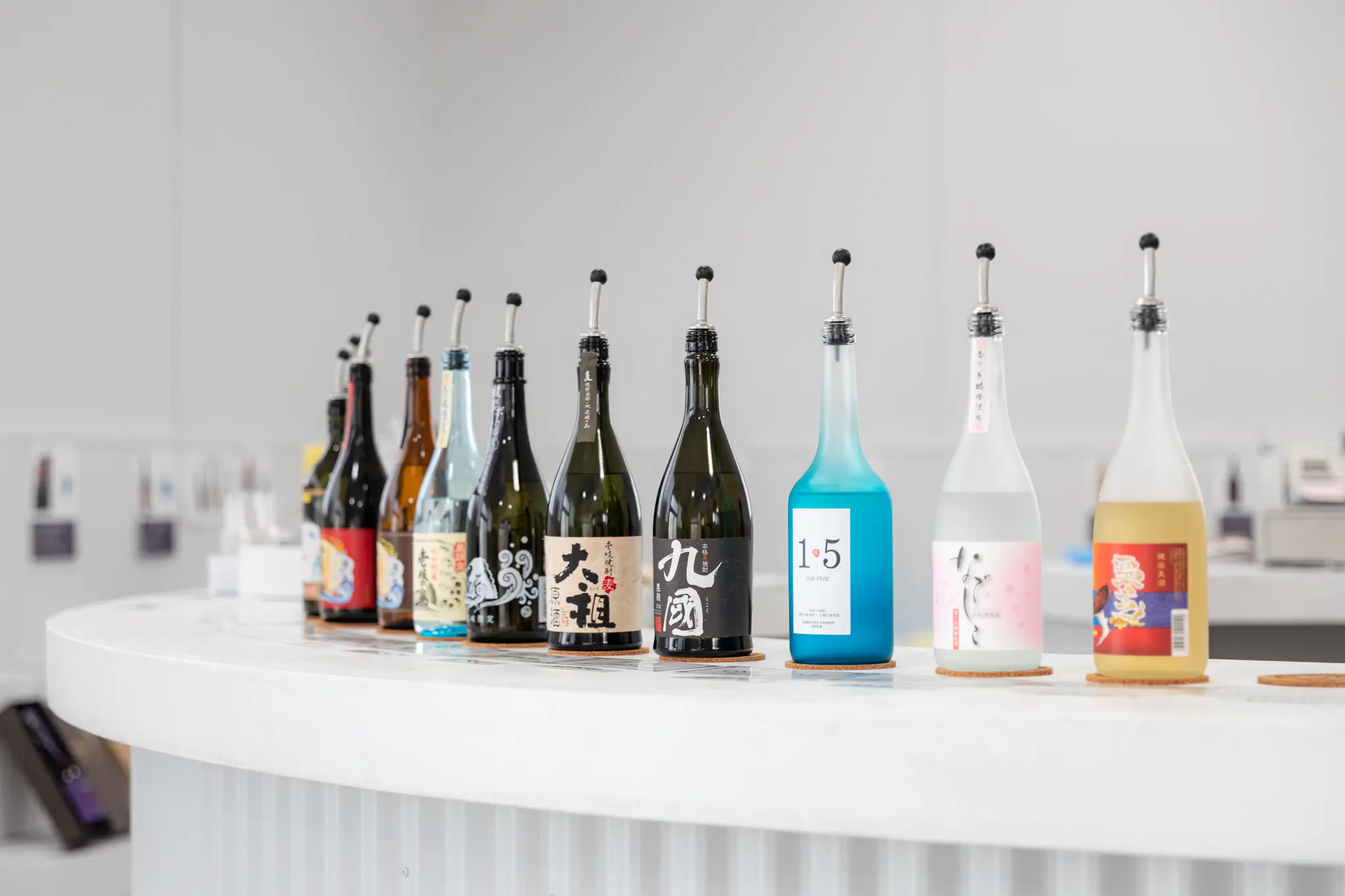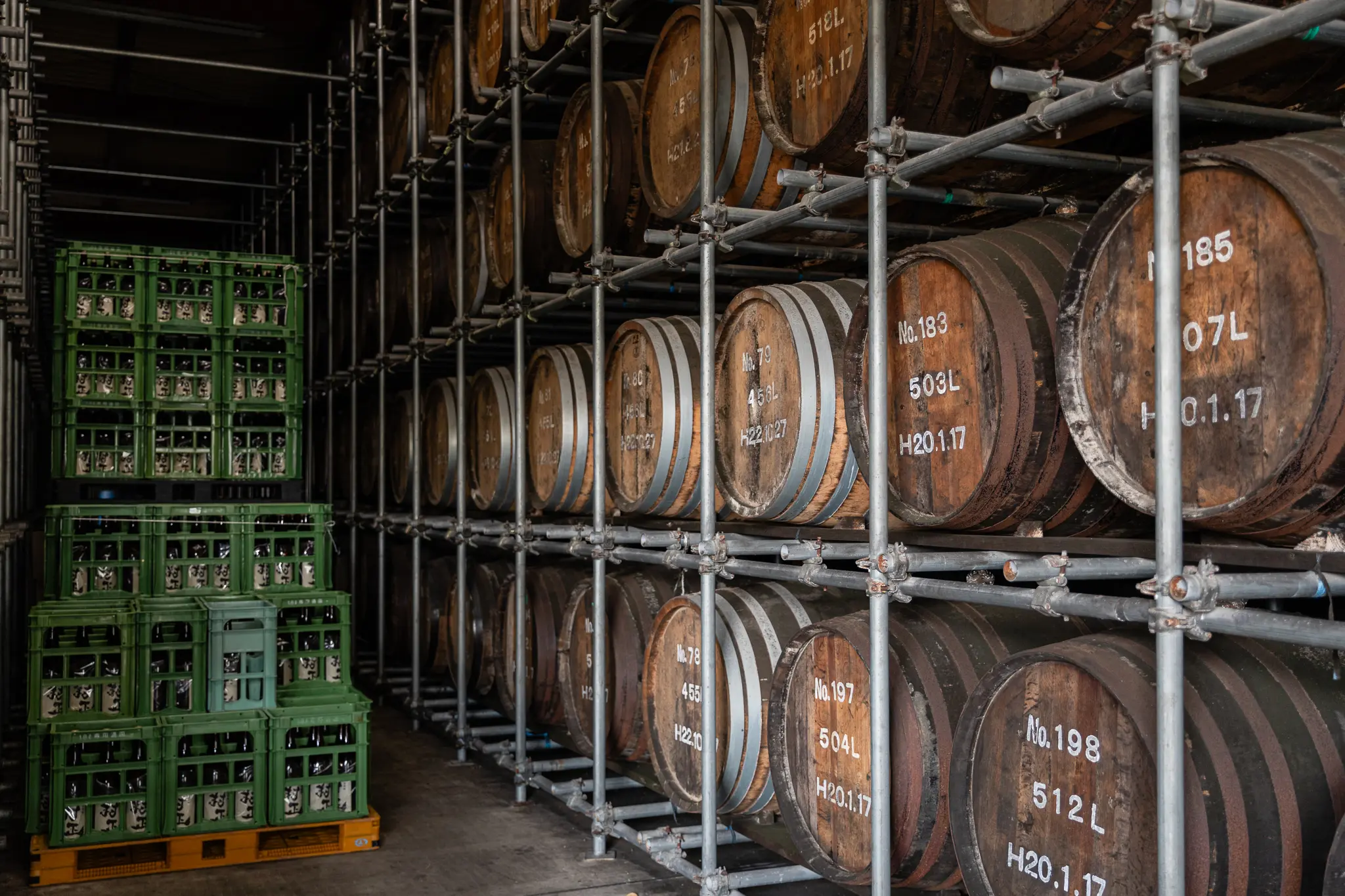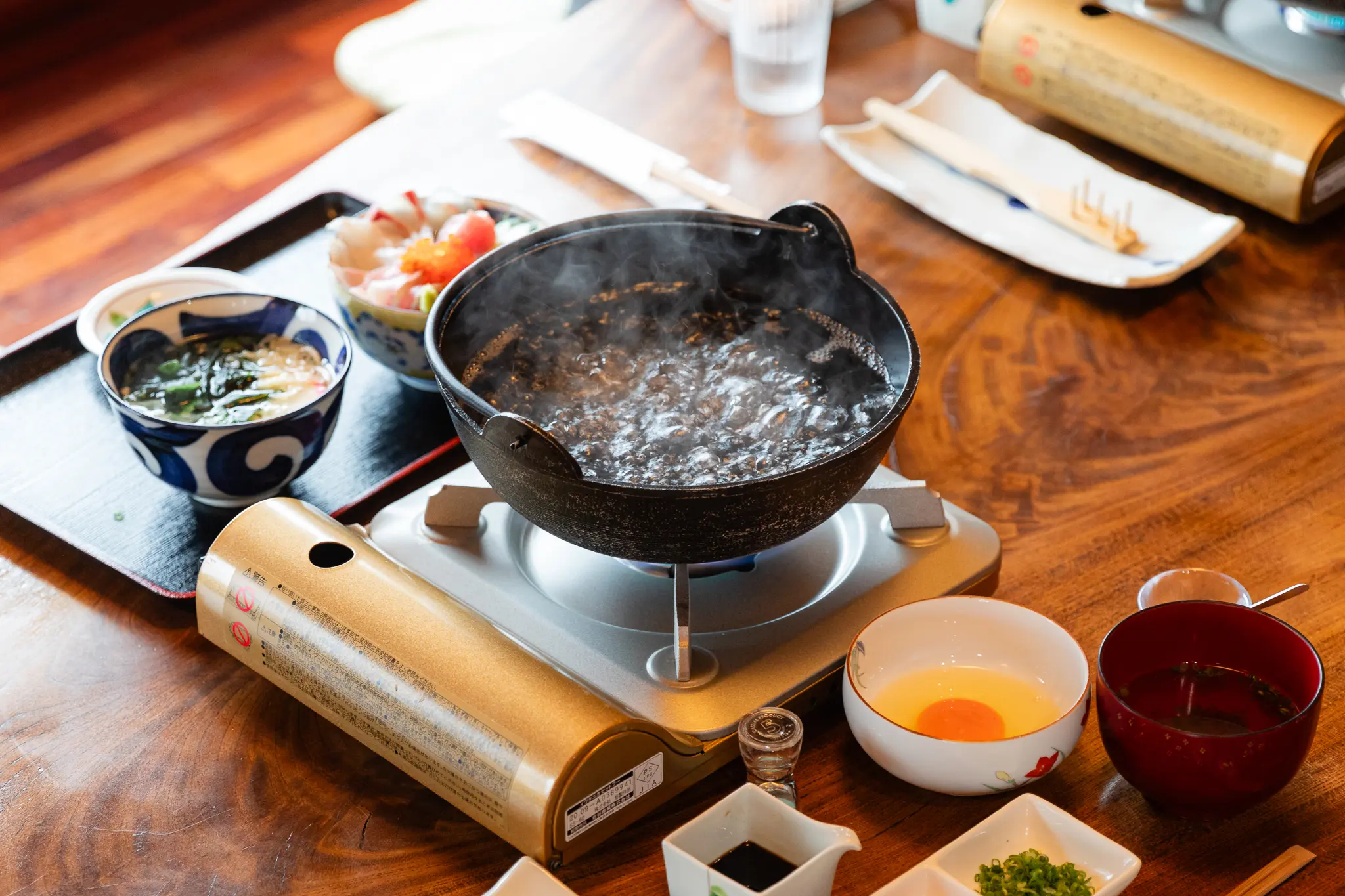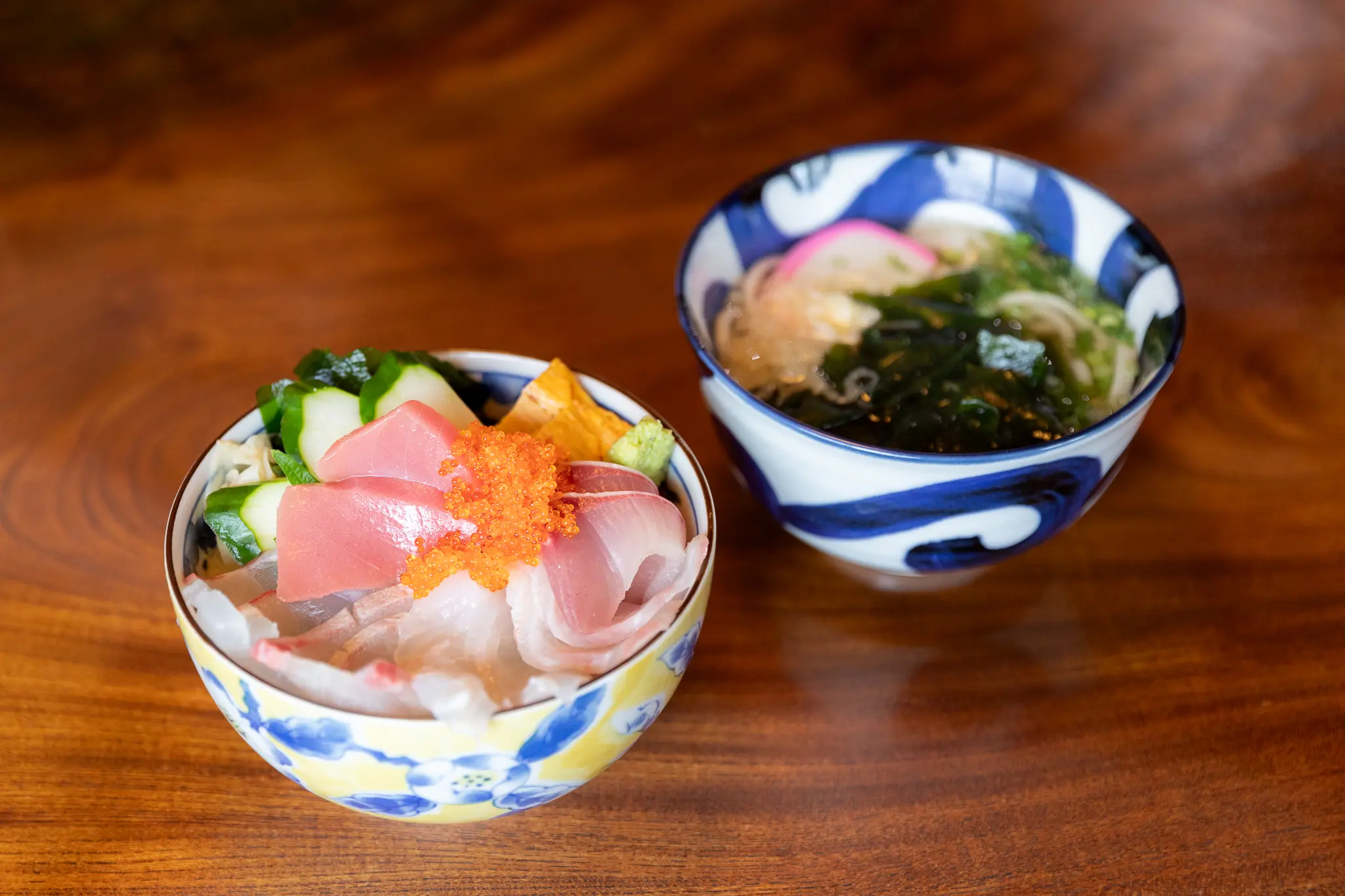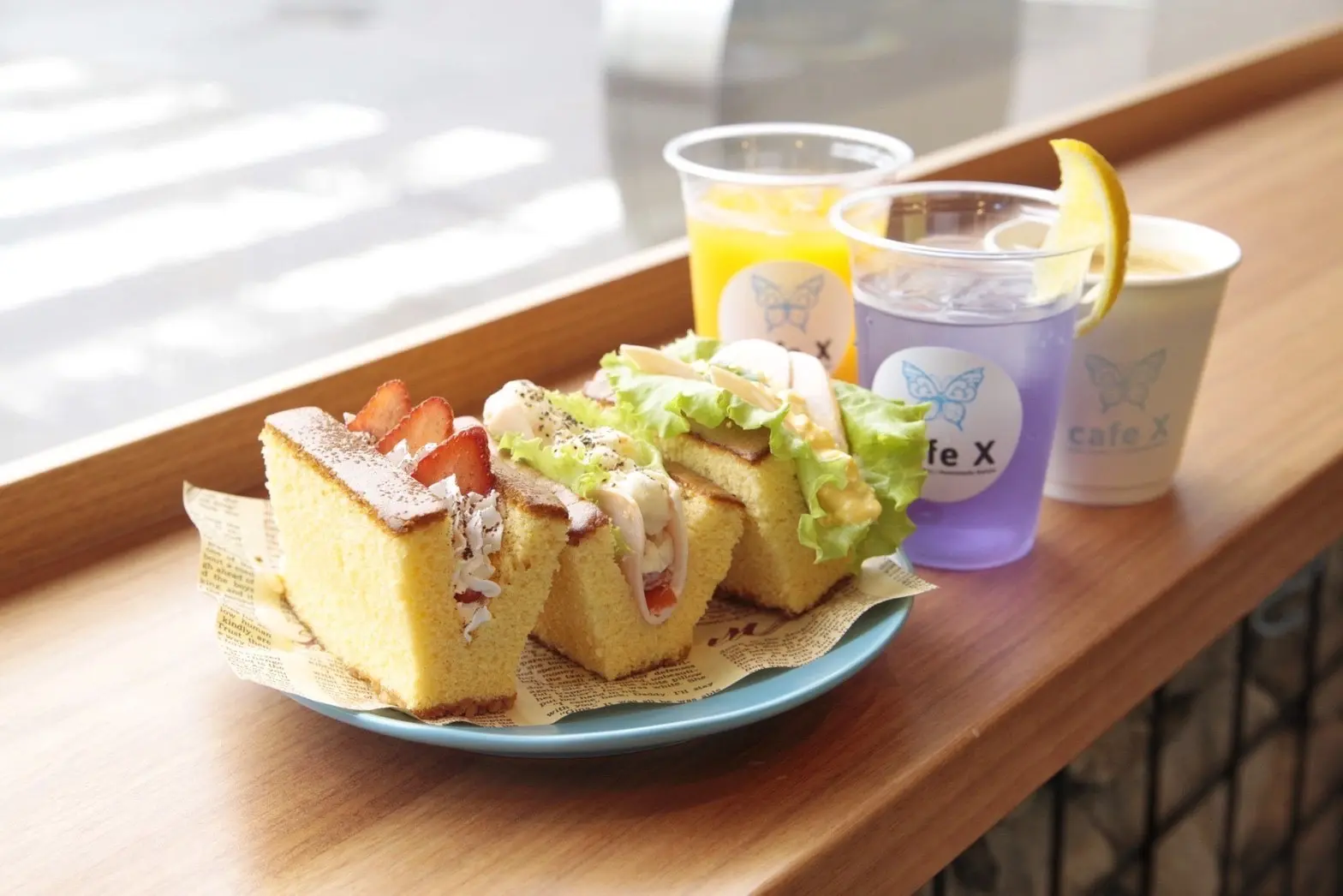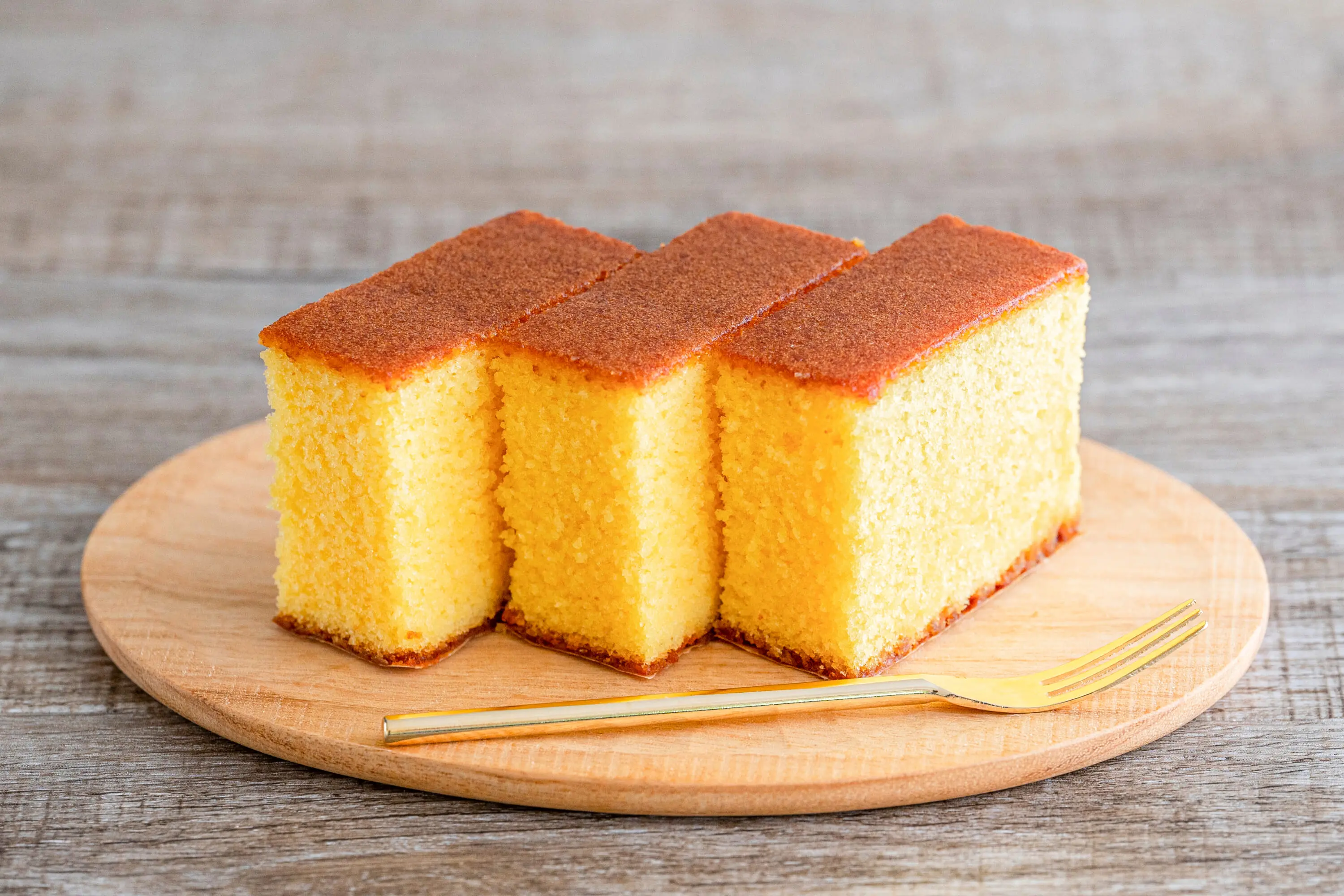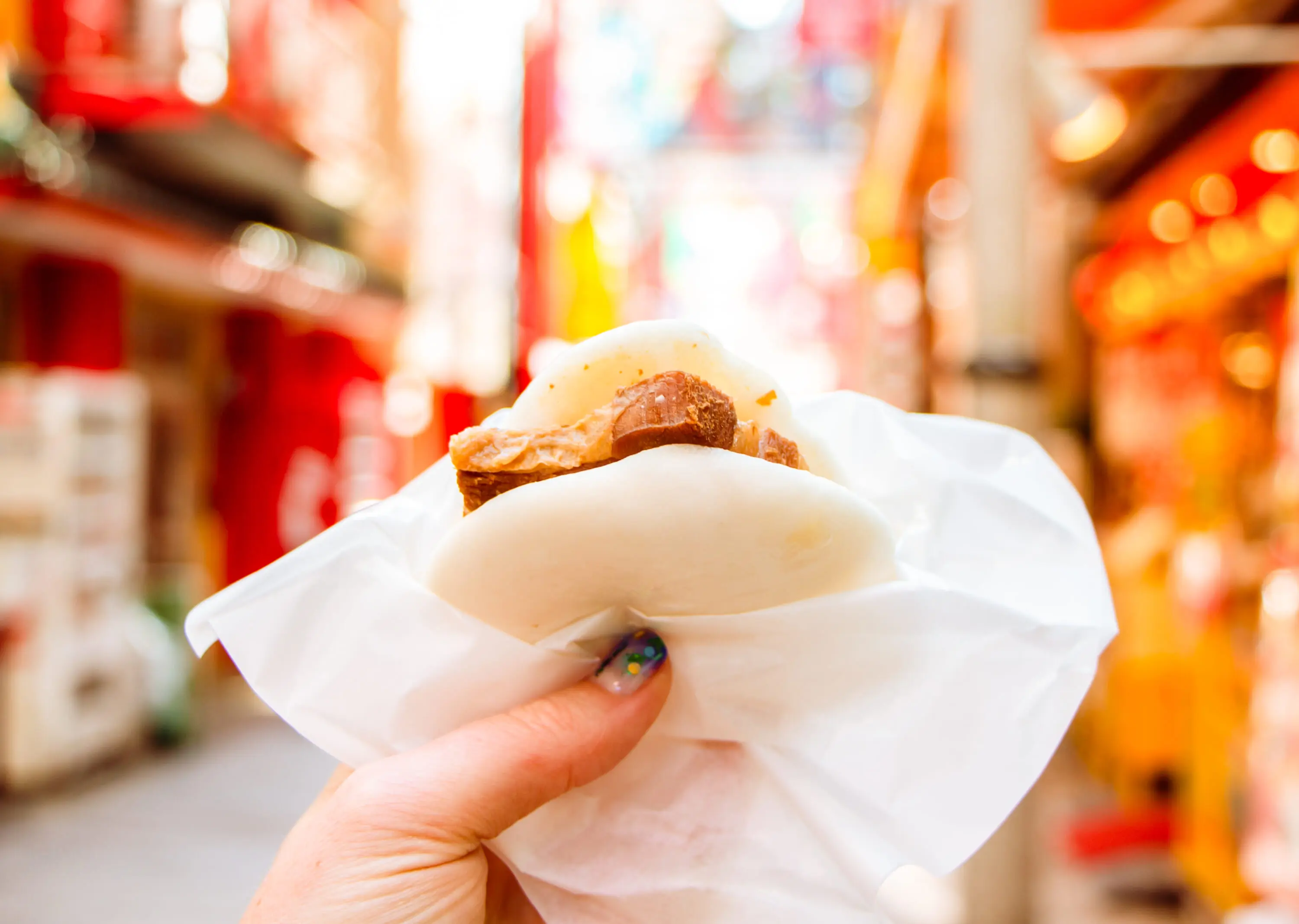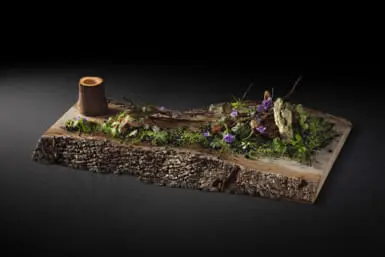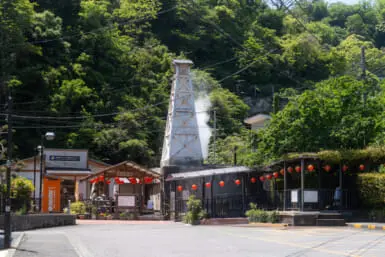Rich in culture, history and traditional crafts, Nagasaki Prefecture is also a treasure trove of islands. While the prefecture is primarily located on the Kyushu mainland, it also administers many islands off the coast of Japan, including Tsushima, Iki and the Goto archipelago. Beautiful, unique and boasting mystical origins, the islands were the first stop on Tokyo Weekender’s journey to discover the charms of Nagasaki. Throughout our trip, we had our fill of amazing local food that not only kept our energy up but also helped us connect more meaningfully with these captivating corners of western Japan.
Tsushima’s Iriyaki Soba
After a short flight on a regional Oriental Air Bridge plane from Fukuoka, we landed on Tsushima, one of the island children birthed by the goddess Izanami as recorded in the Kojiki, the oldest existing written document in Japanese history. Located between Kyushu and South Korea, Tsushima is nearly 90% covered by ancient mountains and primeval forests, which are not conducive to rice cultivation. Buckwheat is a different story. Hardy and able to grow in all sorts of environments, the plant has long thrived on Tsushima where, some say, soba (buckwheat noodles) originated.
Even if Tsushima isn’t where the history of soba began, the island is definitely where the noodles reached delicious heights with the creation of iriyaki soba. Normally, soba is a simple dish born out of necessity and survival. Iriyaki soba, on the other hand, is served in a rich hot-pot broth made from local chicken and plenty of vegetables like shiitake and burdock. When the broth is paired with the earthy and chewy noodles, the savory and fresh flavors and textures work together to create a delicious dish that captures the very essence of Tsushima.
Iki Beef with a Barley Shochu Chaser
The next day, we took a leisurely two-hour ferry trip to Tsushima’s mythological sibling of Iki and immediately noticed how different the two islands are. Much smaller than Tsushima but with a comparable population, Iki felt busier and less imposing with its gentle hills instead of towering mountains.
The second thing we noticed was the scent of cattle in the air, which was fitting as we were having Iki beef for lunch. The steak and barbecued beef we ordered were quite generous but looked a little lean. The meat, however, melted in our mouths almost instantly, and the tender flavor hit us like an umami wave with each bite. Fewer than 1,000 head of Iki cattle are shipped from the island every year, but we understood immediately that the low number couldn’t be due to lack of demand.
We felt that a special lunch deserved an equally exclusive digestif, so we visited the Ikinokura Distillery for a taste of mugi (barley) shochu. Granted the same authentic geographical indication status as Champagne wine and Scotch whisky, Iki mugi shochu is a distilled spirit with a history dating back to the 16th century, thanks to the island’s spacious plains perfect for growing barley, as well as access to plenty of fresh water.
The Ikinokura Distillery keeps Iki’s 500-year-old tradition alive while adding a touch of modernity, like with its modern tasting room. Within the distillery’s white walls, we indulged in a selection of flavorful drinks, each one with a distinct personality. The Ikikko variety had a gentle sweetness and a relaxing aroma, qualities that have made it a local favorite, while the full-bodied 2000 Nen-no-Yume reminded us of Western spirits like vodka and fortified wine. The distillery’s signature Ikinoshima shochu had the most well-rounded and well-balanced flavor, perfect for toasting the abundance of Iki.
Goto’s Bounty of the Sea and Hell-Boiled Udon
You can fly from Iki to the Goto Islands — also Izanami’s island offspring — or take a more scenic route, traveling by ferry to Hakata in Fukuoka Prefecture, then taking an express bus to Nagasaki and finally arriving in Goto by jetfoil boat. Goto, which literally means “five islands,” is actually made up of more than 100 islands. In the north of the archipelago is Kamigoto, and it was there that we enjoyed our next dining experience.
When we asked our guides about the most representative fish of Kamigoto, they couldn’t choose just one, as the locals enjoy everything from mackerel to yellowtail, squid, skipjack and bluefin tuna. The seafood bowl that we ordered represented this variety well and, crowned with sparkly roe resembling little jewels, was like freshness given physical form.
This dish of royal bounty from the sea was accompanied by Goto udon noodles served jigoku-daki (hell-boiled) style — that is, brought to the table in boiling water. What sets the noodles apart from mainland udon, apart from the piping-hot serving style, is the way they’re made: Goto udon dough is repeatedly hand-twisted and mixed with camellia oil sourced from the islands, giving it a dense yet smooth and elastic texture. Goto udon is best enjoyed in a flavorful broth made from ago, or flying fish, a local delicacy.
The International Dishes of Nagasaki
When discussing Nagasaki cuisine, most Japanese people instantly think of champon, a ramen dish of noodles simmered in a rich soup and topped with meat, seafood and vegetables. Champon is inspired by Chinese cuisine and reflects the international history of Nagasaki’s capital city, also called Nagasaki, which has long maintained contact with the Asian mainland and which has a large Chinese population. Another popular Chinese-style Nagasaki specialty is kakuni braised pork served on a steamed bun. So incredibly soft are the kakuni and steamed bun, it feels like you’re eating a delicious salty cloud.
Portugal, the first European nation to arrive in Japan, has also helped shape the culture of Nagasaki. Among the many things Portuguese traders brought with them in the 16th century was bolo de Castela (cake from Castile). Known in Japan today as castella, this popular light and fluffy cake is available everywhere in the city and comes in a wide variety of flavors, including classic, chocolate, citrus and matcha. During our trip, we even found castella sandwiches with potato and egg salad.
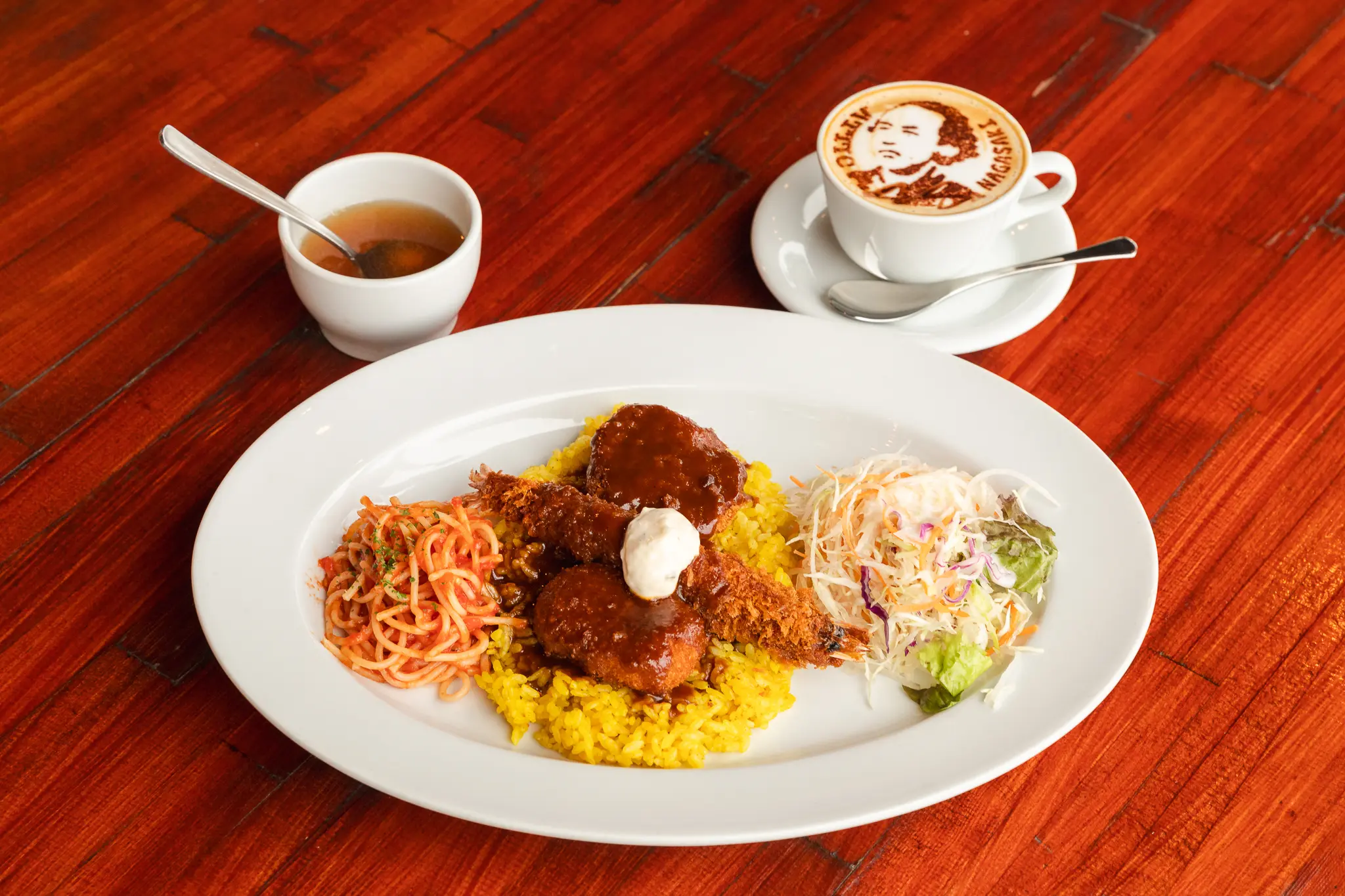
But for a real clash of ingredients, we must talk about Turkish rice. First of all, it does not come from Turkey. Purely an invention of Nagasaki, it consists of pilaf rice, pork cutlet, pasta and demi-glace sauce — though the one we ordered also came with fried shrimp. It sounds rather busy, but it’s a nice assortment for people who want to try a bit of everything for lunch or dinner.
Also, with a handful or so of ingredients that can all be prepared in unique ways, Turkish rice varieties are as numerous as the theories about the food’s origins. No one really knows where the name came from, but the most popular hypothesis says that Turkey was chosen to represent the dish because the country lies between China and Italy, the sources of pilaf — according to the theory — and pasta, respectively.
To drink, we ordered yet another international combo in the form of a coffee with latte art depicting Sakamoto Ryoma, a 19th-century samurai who fought for modernization and the abolishment of feudalism, and who, for a while, called Nagasaki home. It was the perfect meal to end our first — and hopefully not last — trip to Nagasaki.

